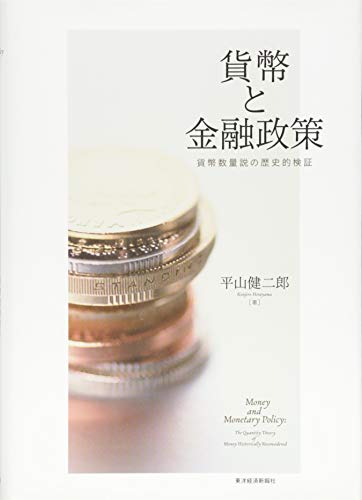11 0 0 0 OA 19世紀イギリスにおける貨幣理論の発展
- 著者
- 平山 健二郎 Kenjiro Hirayama
- 雑誌
- 経済学論究 (ISSN:02868032)
- 巻号頁・発行日
- vol.59, no.3, pp.77-118, 2006-03-15
5 0 0 0 OA 貨幣数量説の歴史的発展
- 著者
- 平山 健二郎 Kenjiro Hirayama
- 雑誌
- 経済学論究 (ISSN:02868032)
- 巻号頁・発行日
- vol.58, no.2, pp.29-62, 2004-09-20
5 0 0 0 OA 16世紀「価格革命」論の検証
- 著者
- 平山 健二郎 Kenjiro Hirayama
- 雑誌
- 経済学論究 (ISSN:02868032)
- 巻号頁・発行日
- vol.58, no.3, pp.207-225, 2004-12-31
3 0 0 0 IR 貨幣数量説の歴史的発展
- 著者
- 平山 健二郎
- 出版者
- 関西学院大学
- 雑誌
- 経済学論究 (ISSN:02868032)
- 巻号頁・発行日
- vol.58, no.2, pp.29-62, 2004-09
The purpose of this paper is to review the historical evolution of the Quantity Theory of Money. I argue that one of the central tenets of the Quantity Theory is the neutrality of money which was also the maintained hypothesis of the Classical and Neoclassical Economics. Despite criticisms from Keynes, the Quantity Theory has revived itself in the form of Monetarism since the 1960s which is now the cornerstone of modern macroeconomics. However, Quantity Theory/Monetarism implicitly assumes the exogeneity and controllability of the money supply. These properties are increasingly cast into doubt as the range and magnitude of inside money (bank deposits and similar financial instruments) have substantially expanded.
3 0 0 0 OA 第二次大戦後のマクロ経済学と金融理論の変遷
- 著者
- 平山 健二郎 Kenjiro Hirayama
- 雑誌
- 経済学論究 (ISSN:02868032)
- 巻号頁・発行日
- vol.65, no.4, pp.35-78, 2012-03-20
2 0 0 0 貨幣と金融政策 : 貨幣数量説の歴史的検証
2 0 0 0 OA 貨幣はどこに消えたのか? : 貨幣数量説の再検討
- 著者
- 平山 健二郎 Kenjiro Hirayama
- 雑誌
- 経済学論究 (ISSN:02868032)
- 巻号頁・発行日
- vol.68, no.3, pp.351-370, 2014-12-20
- 著者
- 平山 健二郎 Kenjiro Hirayama
- 出版者
- 関西学院大学経済学部研究会
- 雑誌
- 経済学論究 (ISSN:02868032)
- 巻号頁・発行日
- vol.68, no.3, pp.351-370, 2014-12
